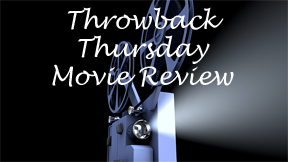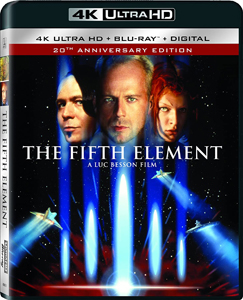“The Fifth Element” (1997) requires a pact with the audience that they’ll be up for something stylistically and tonally different from the average SF space film. Once they make that pact, they’re in for big rewards. Director Luc Besson’s masterpiece is one of the most sumptuously art-designed films ever made, and it combines with energetic pacing and colorful characters for 2 hours of pure entertainment.
So much style
When Leeloo (Milla Jovovich, in her most iconic performance) steps out of the storm drain a la “The Fugitive,” she (and we) see artist Jean-Claude Mezieres’ world of “Valerian and Laureline” – most directly “The Circles of Power” (Vol. 15), from which the flying cars and cityscape are directly transferred – brought to big-screen life.
Twenty years later, Besson finally made a “Valerian” movie, and it suffered the same initial fate as the “Fifth Element,” with many viewers not getting it. “Valerian” might not achieve a reappraisal, because – although I personally like it – it’s not outstanding on every level the way Besson’s first SF classic is.

“The Fifth Element” (1997)
Director: Luc Besson
Writers: Luc Besson (screenplay, story), Robert Mark Kamen (screenplay)
Stars: Bruce Willis, Milla Jovovich, Gary Oldman
I notice new details of design on each viewing. Consider the apartment of Korben Dallas (Bruce Willis, in his best blend of action star and character). Amid a funny sequence where he’s frantically hiding people, we see the space-saving elements of this future Big Apple abode. A fridge lowers into the floor and has a sink on top. When lowered further, that sink becomes a full shower (with an “autowash” function, no less).
“The Fifth Element” is like the sunny answer to “Blade Runner.” Brion James is in both films, and Dallas eats noodles in his apartment window. The restaurant “pirate” ship sidles right up to it in another lived-in future touch.
Leeloo’s two outfits – including the famous (infamous?) “thermal bandages” — are both staples of cosplayers now. And the special effects are incredible for 1997, highlighted by the Mondoshawan warriors, who amusingly sound guttural even when shape-shifted into human form. Looking back on it, it’s amazing that an original idea (as opposed to an established franchise) was allowed such a big budget.
Actors’ playground
Remarkably, “The Karate Kid’s” Robert Mark Kamen co-writes the film along with Besson, who came up with the story. Not that the “KK” films don’t have their appeal, but “Element” is so much smarter and more polished. Everything ties together in logical yet imaginative fashion. All the little gags land, including Dallas’ phone calls from his nagging off-screen mother.

“The Fifth Element” ranks among the elite films for every actor, even the versatile Gary Oldman, who plays Zorg, a deliciously Texas-accented baddie obsessed with “the stones.” “Alien’s” Ian Holm jumped out at me on this viewing as the priest Cornelius, who deeply cares about saving the world yet sometimes has a fatalistic (albeit worried) attitude. Check out Holm’s delivery when Cornelius discovers a bomb: “It’s a … it’s a … it’s a …”
Jovovich is so good as a childlike supreme being (speaking long strings of a made-up language) that it’s hard to believe she didn’t become a world-class actor.
Willis is always an action hero here, starting with a funny scene where he effortlessly disarms the “Gimme the cashhhhhhh!” guy in his doorway. Yet Korben has vulnerability; he has no solution for his expiring cab license and he plays this adventure from Earth to Fhloston Paradise by ear, driven by an organically budding love for Leeloo.
As for Chris Tucker’s Ruby Rhod, this will always be the film’s most controversial role. This over-the-top radio DJ is all you notice on the first viewing. But a few viewings later, he more smoothly blends in. That said, I’m glad there aren’t Ruby Rhods in every SF movie.
Nothing else quite like it
Some little things are influential in “Element,” though. Leeloo’s “come on, bring it” motion would become more famous in “The Matrix.” And her unleashed, programmed fighting ability would be used by “Serenity” with the character of River.
Like “Star Wars” did 20 years prior, “The Fifth Element” takes things that came before (and influences things that came after), but pieces them into an original work. On screen at the time, there was nothing else like “The Fifth Element.” In 1997, I didn’t know how to take it. But now it’s on my short list of all-time SF classics.

